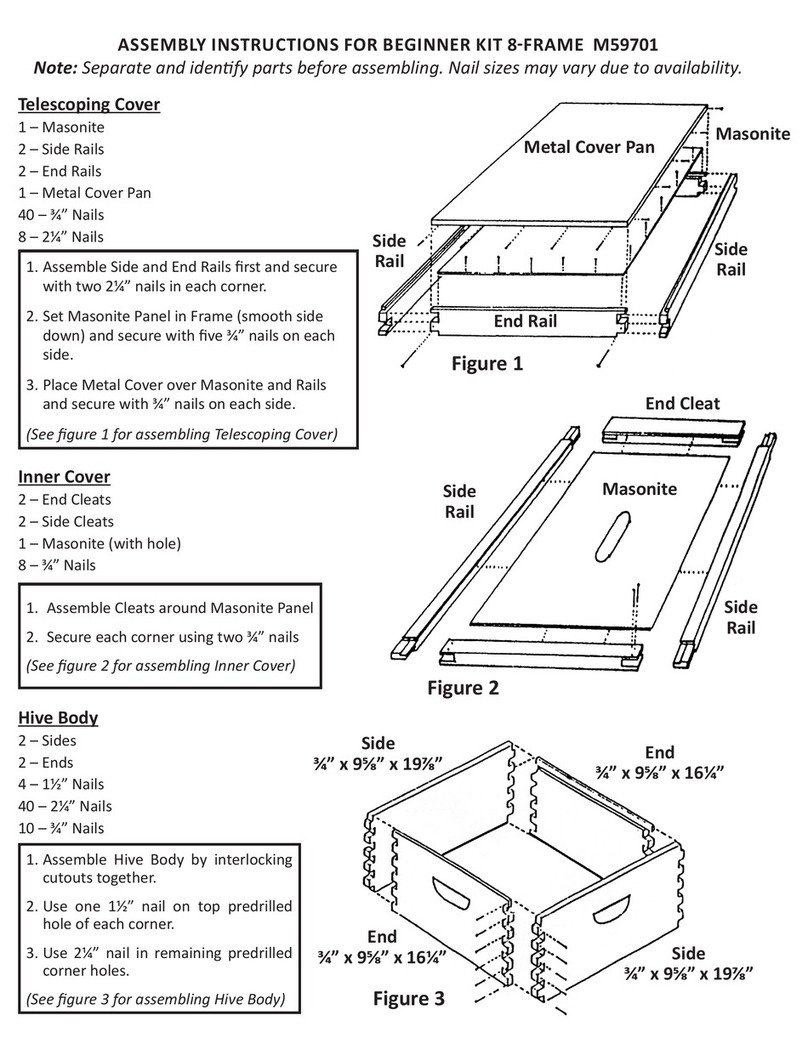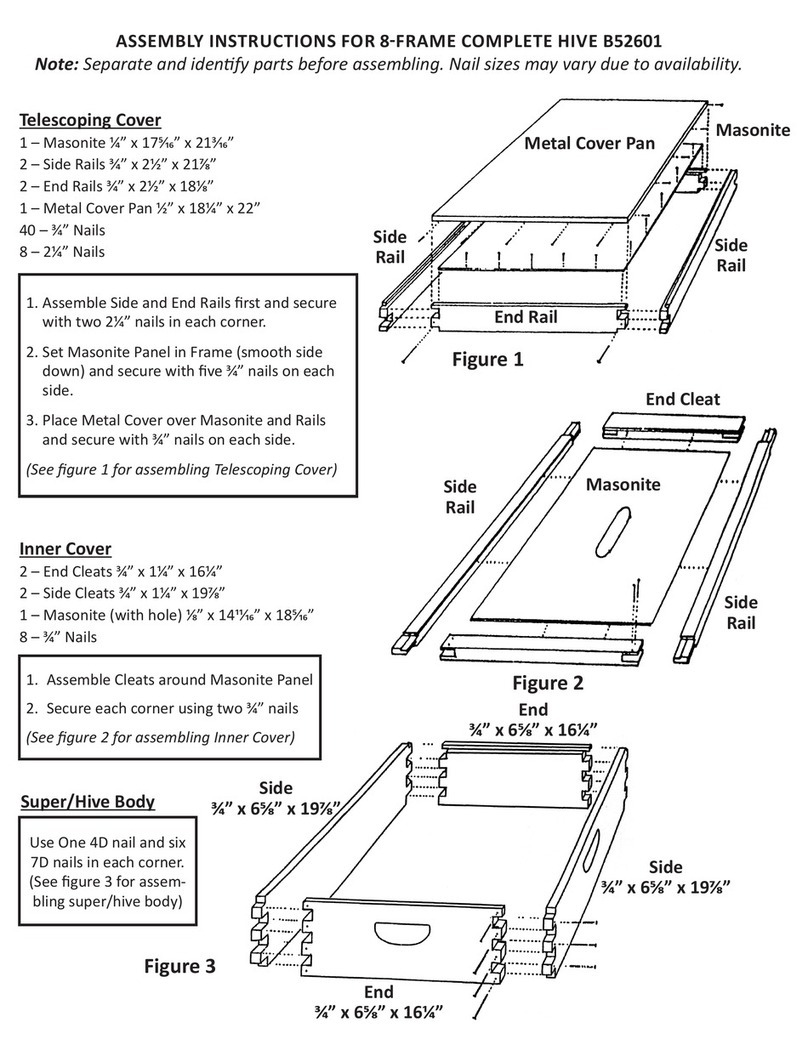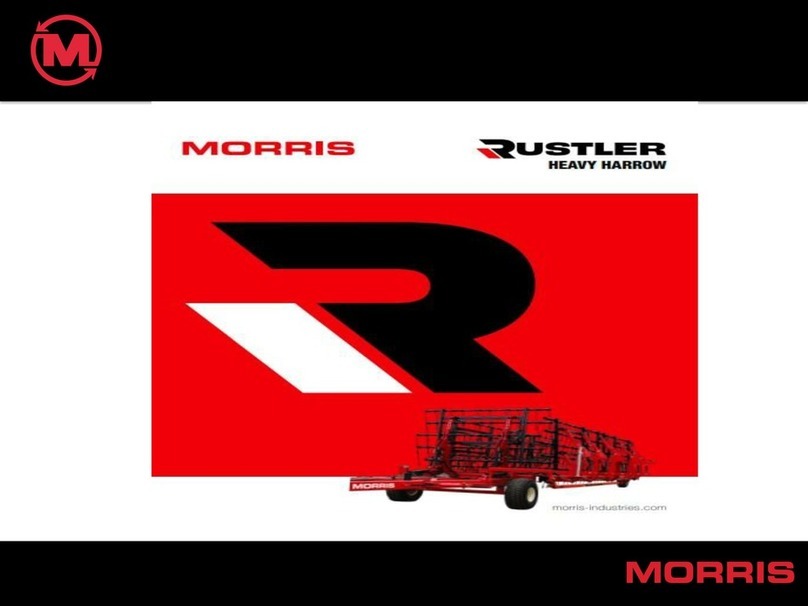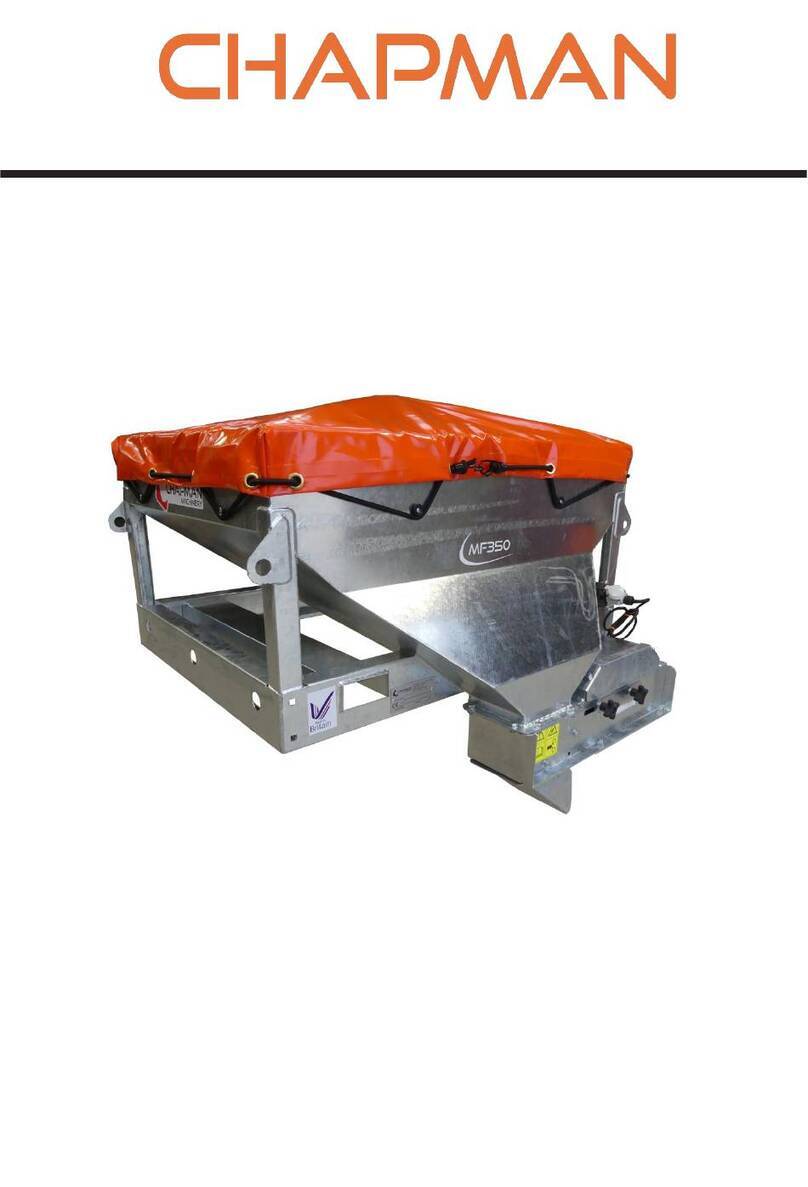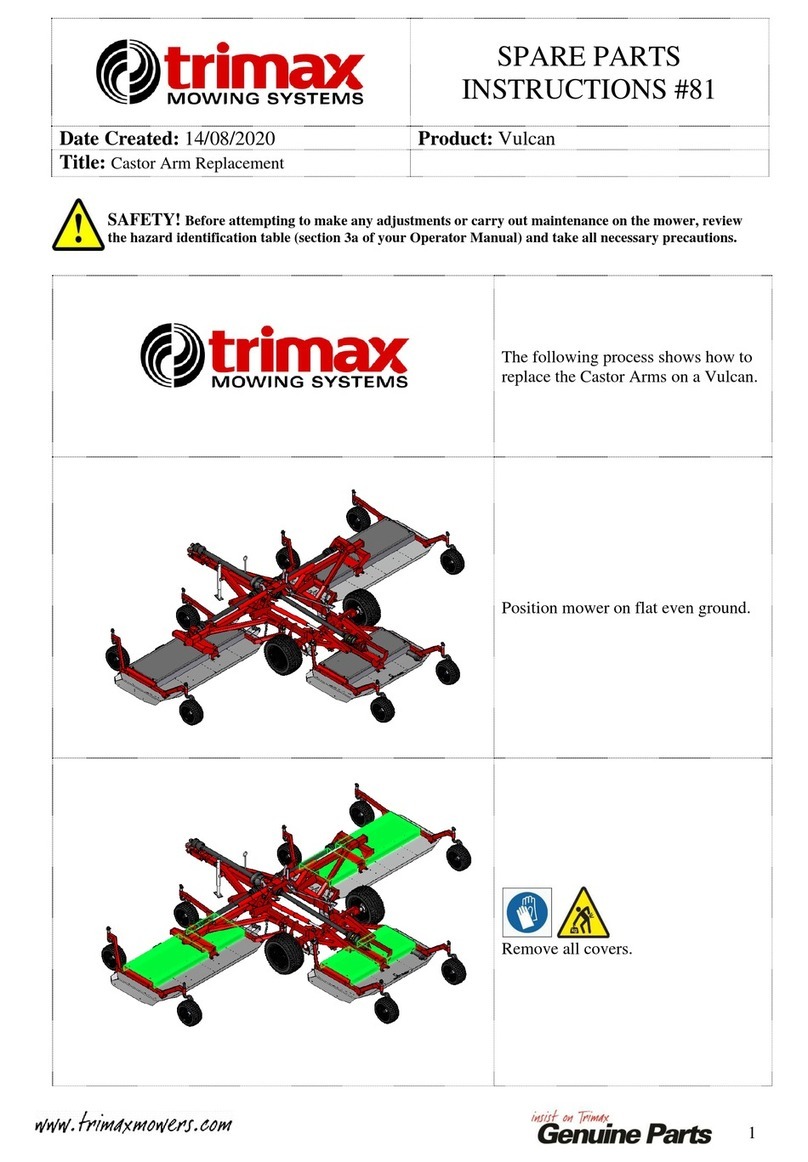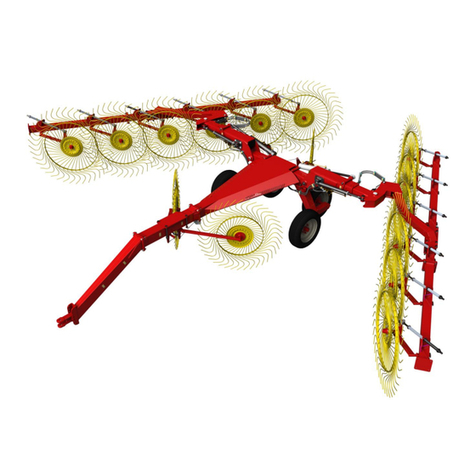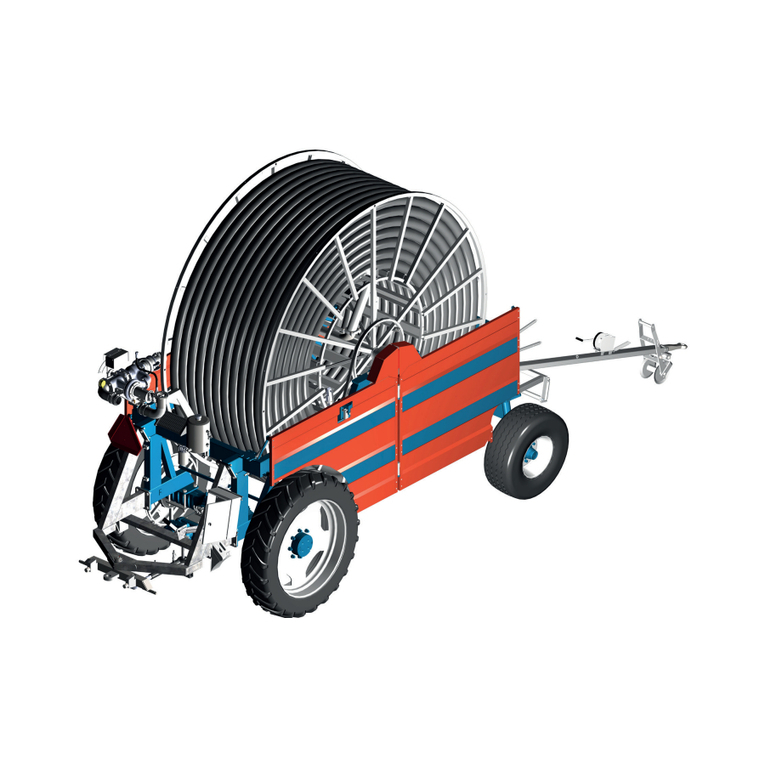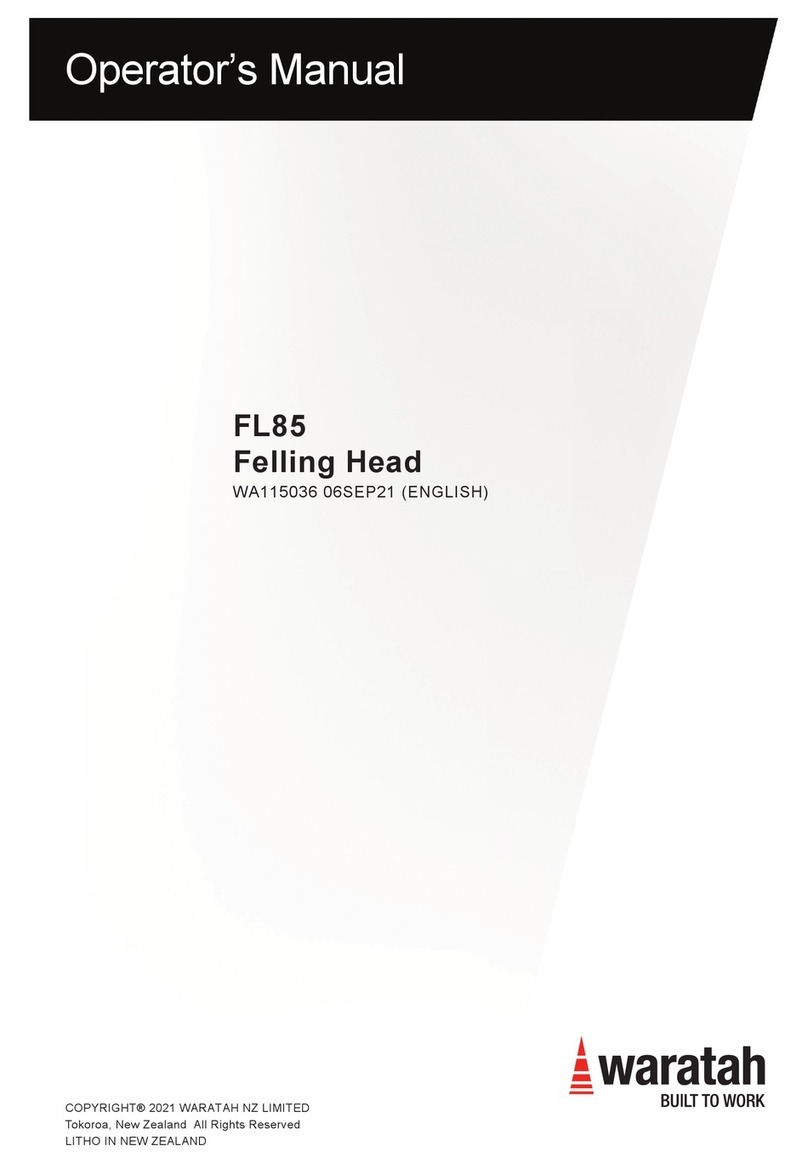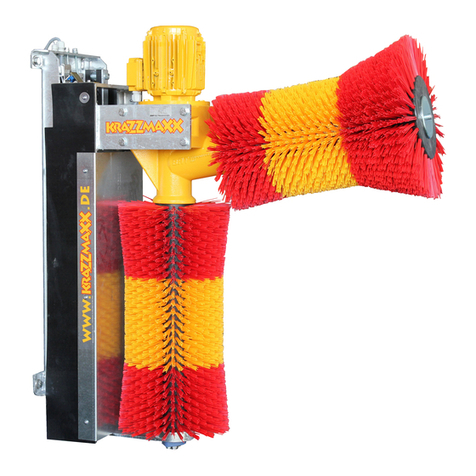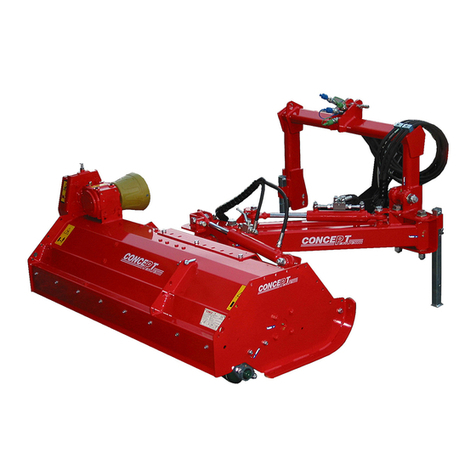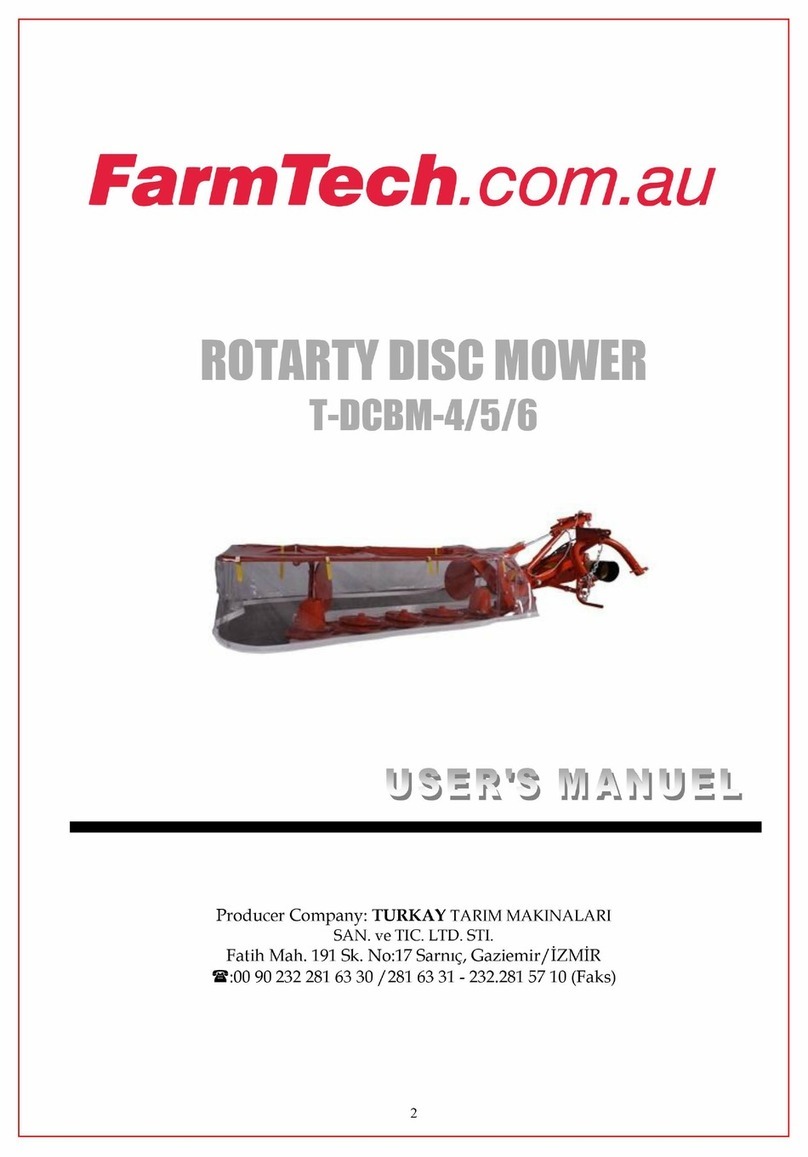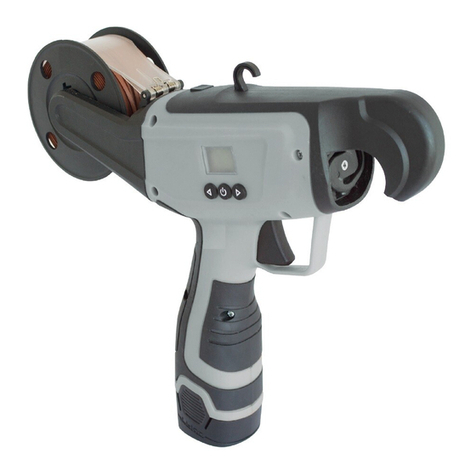BEEHIVE CE MVS User guide

77167 04/2004
I
IN
NS
ST
TA
AL
LL
LA
AT
TI
IO
ON
N,
,
O
OP
PE
ER
RA
AT
TI
IO
ON
N,
,
M
MA
AI
IN
NT
TE
EN
NA
AN
NC
CE
E
A
AN
ND
D
S
SA
AF
FE
ET
TY
Y
I
IN
NS
ST
TR
RU
UC
CT
TI
IO
ON
NS
S
F
FO
OR
R
B
BE
EE
EH
HI
IV
VE
E
I
IN
NC
C.
.
R
RS
ST
TD
D0
06
6F
F
&
&
R
RS
SB
BD
D0
06
6A
A
S
SE
EP
PA
AR
RA
AT
TO
OR
R
C
CE
E
M
MV
VS
S
B
BE
EE
EH
HI
IV
VE
E
I
IN
NC
C.
.
®
®
A Weiler Company
WEILER AND COMPANY, INC. WEILER BEEHIVE CANADA, LTD WEILER BEEHIVE EUROPE LIMITED
Corporate Headquarters St. Marys, Ontario, Canada Yate, Bristol, England
Whitewater, Wisconsin U.S.A. TEL 519-349-2620 ●800-558-8507 TEL +44 (0) 1454 320900
TEL 262-473-5254 ●800-558-9507 FAX 519-349-2631 FAX +44 (0) 1454 326262
FAX 262-473-5867
9100 SOUTH 500 WEST ●P.O. BOX 5002 ●SANDY, UTAH 84091-5002 U.S.A. 801-561-4211 ●800-621-8438 ●FAX 801-562-5857
PROVIDING SOLUTIONS FOR FOOD PROCESSING www.weilerinc.com

ii
TABLE OF CONTENTS
PAGE
Table of Contents ii
List of Figures v
CAUTION/WARNING 1
I. INTRODUCTION 2
General 2
Separator 2
Foreseeable misuse 2
Limits 3
Principles of operation 3
II. GENERAL SAFETY INFORMATION 4
Safety Procedures 4
III. CORRESPONDENCE AND SHIPPING 7
IV. PRE-INSTALLATION INSPECTION 7
V. INSTALLATION 8
General 8
Installation 8
Motor Rotation 11
VI. ELECTRICAL CONTROLS 12
General 12
Relay Panel 12
Control Panel 13

iii
VII. CLEANING 14
General 14
Sodium Hydroxide (NaOH) Cleaner 14
Cleaning the Chamber 17
Cleaning and Sanitizing 17
VIII. ASSEMBLY 18
General 18
Auger/Chamber Clearance Adjustment 18
Separator Assembly 21
IX. SEPARATOR OPERATIONS 23
General 23
Control Panel 23
Separator Operation 24
Ring Valve Adjustment 26
Calculating Yield 28
Separator Head Cooling 28
X. DISASSEMBLY 29
XI. MAINTENANCE 31
General 31
Separator Lubrication 31
Separator Maintenance 32
Timing of Feed-screws 33
Auger Head Bearing 35
Bearing Cartridge 36
Auger Wear 38
Chamber Wear 39
Ring Valve Wear 40
Electrical Control 41
XII. TROUBLESHOOTING 42
Overload Procedure 42
Separator Troubleshooting 43
Electrical Control Troubleshooting 44

iv
XIII. PART ORDERING 45
Separator Information 45
Parts Lists (Electrical Kits) 46
Parts Lists (Auger, Chamber, and Ring Valve) 49
Parts Lists (Accessories) 50
XIV. WARRANTY 51
Material and Workmanship Warranty 51
Conditional Warranty 51
XV. APPENDIX 52
Installation Drawing #9188D REV 03
Assembly Drawing #9189D REV 04
Boom Assembly RH (Optional) #9259D REV 01
Boom Assembly LH (Optional) #9260D REV 02
Head Assembly #8540D REV 05
Electrical Schematic #8518C REV 06
Control Panel Assembly #8918D REV 01
Relay Panel Assembly #8924D REV 04
Control Installation #8639A REV 01
MANUFACTURER’S DATA
SEW Eurodrive MOTOR #09 793 67 US 02/01
Parts List (DV160M4) #08 635 587 US 08/02
Parts List (DV200L4) #08 640 587 US 08/02
Connection Diagram #USCS 01/00
SEW Eurodrive GEAR REDUCER #01 805 52 US 12/02
Parts List (R97) #01 254 496 US 06/01
Parts List (R107) #01 255 496 US 06/01
SEW Eurodrive VARIGEAR #12 783 00A US 06/99
Parts List (VU41) #12 256 292 US 09/02
Parts List (VU41 Pulleys) #11 256 292 US 06/01

v
LIST OF FIGURES
FIGURE DESCRIPTION PAGE
2.1 Safety Labels 6
5.1 Mounting Pad Adjustment 9
5.2 Control Panel Installation 9
5.3 Relay Panel Installation 10
5.4 Motor Rotation 11
7.1 Mixing Sodium Hydroxide (NaOH) Cleaner 16
8.1 Assembly Separator Head 19
9.1 Control Panel 23
9.2 Ring Valve Adjustment 27
9.3 Calculating Yield 28
11.1 Timing of Feed-screws 34
11.2 Auger Head Bearing 35
11.3 Auger Wear 38
11.4 Chamber Wear 39
11.5 Ring Valve Wear 40

1
CAUTION!!!
READ ALL DIRECTIONS IN THIS MANUAL
1. Read and follow all directions contained in this manual. Failure to do so may result
in personal injury and/or Separator damage.
2. All electrical equipment may be hazardous if not properly operated. READ ALL
SAFETY INSTRUCTIONS AND FOLLOW RECOMMENDED PROCEDURES AT
ALL TIMES TO AVOID PERSONAL INJURY.
WARNING!!! Follow These Safety Rules
DO NOT operate this Separator until all safety rules (local and national) have been met.
Electrical and mechanical controls must be selected, located, and installed in
compliance with all local and national electrical and safety codes.
DO NOT operate unless Separator guards and safety devices are in place and working.
DO NOT reach into a running Separator.
DO NOT reach into a stopped Separator unless the power is disconnected and LOCKED
OUT.
DO NOT work above or stand beside the Separator inlet.
DO NOT operate the Separator in a careless manner.
DO NOT overload the Separator.

2
I. INTRODUCTION
GENERAL
This instruction manual is designed to provide the information required to operate, clean
and maintain this Separator.
All personnel involved in the operation, cleaning or maintenance of the equipment should
read this instruction manual.
SEPARATOR
This Separator is an all stainless steel, mechanically regulated, self-feeding processor
used to process poultry, red meat, seafood and certain types of fruits and vegetables. This
Separator is a twin-motor design with separate control of the Feed-screws and Separator
Head for maximum product control.
This Separator Head has been specifically designed for maximum product quality and
production for a specific processing requirement. Please contact Beehive Inc. if there are
any changes to the product requirements.
FORESEEABLE MISUSE
Purposes for which Separator was not intended.
Prohibited application.
Purposes for other materials not intended (foreign objects).
Dimensional variation of material to be processed.
Input of large, hard, frozen material or ice.
Operator carelessness.
Operator taking “line of least resistance” in carrying out a task.
Operator handling parts without regard for personal safety.
Reaching into Hopper without stopping Separator.
Adjusting Ring Valve without stopping Separator.
Operation without covers and guards in place.
Operation without upper Hopper extension in place.
Use of Separator cabinet as a step.
Installation, assembly, disassembly, cleaning and maintenance without making sure all
electrical power to the Separator has been shutoff, disconnected and LOCKED OUT.

3
LIMITS
This Separator is designed for its intended use. Trained operators and skilled maintenance
personnel are required for safe operation. Proper use and adherence to specified
application will result in safe, efficient processing.
PRINCIPLES OF OPERATION
Pre-sized product is conveyed by the Feed-screws into the Pump Housing where it is
forced into the Adapter Bracket. The product is picked up in the Adapter Bracket by the
Auger and accumulated against the Ring Valve. Internal pressure increases with the
accumulation of material, which causes the "softer" portion of the product to pass through
the perforations in the Chamber. The "harder" material passes on through the ports in the
end of the Auger and is discharged through the Ring Valve. Repositioning the Ring Valve
varies yields.

4
II. GENERAL SAFETY INFORMATION
All operating and maintenance personnel should be familiar with all aspects of the
operation and care of the Separator. The following Safety Summary should be used as a
guide for the safe operation and maintenance of the Separator. Additional safety warnings
and cautionary statements are given on the equipment throughout this manual.
WARNING - Severe physical injury can result from poor safety practices.
Establish good safety practices when handling the parts and when
working around the Separator. Never operate the Separator
without all drive covers and safety devices installed correctly.
SAFETY PROCEDURES
Rotating Parts Safety - Keep hands away from all rotating parts when the Separator is
in operation. When it is necessary to adjust any part, be certain
all rotation has stopped and all electrical power is turned off,
disconnected and LOCKED OUT.
Maintenance Safety - Turn off, disconnect and LOCK OUT power before attempting
any maintenance procedure or removing covers and access
panels. After completing any maintenance procedure, be
certain parts are properly tightened and all safety panels and
covers have been replaced.
Hopper Safety - DO NOT reach into the Hopper during operation or at any time
while electrical power is connected. If a foreign object falls into
the Hopper or Feed-screw, DO NOT try to remove the object
without first disconnecting the electrical power. If the Feed-
screws becomes locked or stopped, DO NOT try to free the
Feed-screws without first disconnecting the electrical power.
Clothing Safety - Loose clothing, such as lab coats and packing aprons, can
get caught in rotating parts resulting in possible injury. Keep
loose clothing clear of all rotating parts.

5
Sodium Hydroxide
(NaOH) Cleaner Safety - Sodium hydroxide (NaOH) cleaner, used for cleaning the
perforated area of the Chamber, is an alkali blend. Improper
handling of the cleaner can cause severe burns to the skin
and eyes. Refer to Section VII. CLEANING for instructions
regarding the safe use and handling of sodium Hydroxide
(NaOH) cleaner.
WARNING - Lethal voltages are present within the relay panel when power is
applied.
Electrical Safety - Keep the area under cabinet dry. Keep the cabinet access
panels in place during cleaning, rinsing, and sanitizing to keep
moisture away from the electric drive motor. Disconnect and
LOCK OUT power during any maintenance, assembly,
disassembly, cleaning or inspection. Make sure all electrical
plugs are in good working order and dry before using.

6
Safety Labels- The safety labels in Figure 2.1 should be clearly visible and
maintained on equipment at all times. Contact Beehive Inc.
for replacement labels.
Figure 2.1

7
III. CORRESPONDENCE AND SHIPPING
In all correspondence with Beehive Inc. about a specific Separator, please include the
Model and Serial Number of the Separator. This will ensure a quick response and
shipment of the correct parts.
The Separator is assembled and tested at the factory. It is then shipped as four
components.
* Separator * Accessory Kit
* Control Panel * Relay Panel
* Boom Assembly (Optional)
* One-year spare parts kit (Optional)
To prevent any damage and for security, the Separator is shipped in a fully enclosed
shipping container. Standard accessories, tools and spare parts are packaged in a
separate box and banded within the container.
IV. PRE-INSTALLATION INSPECTION
Shipping containers should be opened with care to prevent possible damage to the
equipment. Using the packing list attached to the container, inspect all parts to determine
the Model Number of the Separator, and to ensure the correct Chamber, electrical
control(s), accessories, tools and spare parts are received as ordered.
Damaged parts, missing parts and parts received that are not on the applicable purchase
order should be reported immediately to Beehive Inc.

8
V. INSTALLATION
GENERAL
The Separator can be installed safely and correctly in a minimum amount of time using the
outlined procedure and the following reference documents.
∗Installation Drawing #9188D ∗Electrical Schematic #8518C
∗Assembly Drawing #9189D ∗Control Panel Assembly #8918D
∗Boom Assembly RH #9259D (Optional) ∗Relay Panel Assembly #8924D
∗Boom Assembly LH #9259D (Optional) ∗Control Installation #8639A
∗Head Assembly #8540D ∗Manufacturer’s Data
∗Located in the Appendix in the back of this manual.
INSTALLATION
Refer to Installation Drawing #9188D for installation dimensions.
WARNING - Make sure that electrical power has been shut off, disconnected
and LOCKED OUT before proceeding with the installation. Many
of the Separator parts are heavy so use caution when handling to
prevent Separator damage and/or personal injury.
1. Install the Separator using the machine dimensions shown on the Installation
Drawing #9188D. All product inlet and outlet locations are indicated.
2. The Separator must be mounted on a rigid platform stand or directly on the floor.
The Separator is equipped with four adjustable pads. The pads (shown in Figure
5.1) must be adjusted to level the Separator and provide equal support. Tighten the
pad locking nuts to maintain proper adjustment.
3. The Control Panel should be wall or stand mounted in an easily accessible
area within 15 feet (5 m) of the Separator. Easy access to the Control Panel must
be maintained at all times. Physical dimensions are shown in Figure 5.2.
4. The Relay Panel in Figure 5.3 should be wall mounted in a separate dry room/area.
Cable length from the Control Panel to the Relay Panel should not exceed 150 feet
(45 m).

9
2.2 [56.7] MIN.
4.2 [107.5] MAX.
LOCKING
NUT
Figure 5.1
BEEHIVE CONTROL PANEL
7.9
[200]
11.8
[300]
Figure 5.2

10
BEEHIVE 400-575V RELAY PANEL
23.6
[600]
23.6
[600]
Figure 5.3
For complete electrical installation and connection information, see Section VI.
ELECTRICAL CONTROLS.
5. After the initial installation of the Separator, sanitize all parts that will come in
contact with food products. Refer to Section VII. CLEANING.

11
MOTOR ROTATION
Figure 5.4
The motor must be checked for proper rotation before installing the initial Separator Head.
The Auger must rotate counterclockwise when facing the motor output shaft.
CAUTION: Incorrect rotation may damage the Separator.
If motor rotation is incorrect, interchange any two motor leads and recheck the output shaft
rotation. Refer to Electrical Schematic #8518C.

12
VI. ELECTRICAL CONTROLS
GENERAL
The Motor Relay Panel and Control Panel are designed for ease of installation. Installation
must be in accordance with all applicable electrical codes. Use a registered electrician or
electrical contractor for wiring installation. Refer to Electrical Schematic #8518C and
Control Installation Drawing #8639A for complete wiring and installation information.
WARNING - The panels should be installed, adjusted and serviced by
qualified electrical maintenance personnel. Improper installation
or operation of the panels may cause injury to personnel or
damage equipment. The panels must be installed and grounded
in accordance with local and national electrical codes.
Potentially lethal voltages exist within the panels. Extreme care must be
taken to ensure all power sources are disconnected and LOCKED OUT before starting
installation, maintenance or repair procedures.
RELAY PANEL
The Relay Panel is suitable for most areas where industrial equipment is installed. The
area must be well ventilated, allowing unrestricted airflow. Locations subject to steam,
excessive moisture, oil vapors, chemical fumes, corrosive gases/liquids, or excessive dirt
must be avoided. If these are unavoidable, the appropriate enclosures must be supplied or
a separate clean air supply provided.
The ambient temperature should not exceed 105oF (40 C).
Use the following procedure to install the Motor Relay Panel.
1. Mount the Relay Panel in a dry, enclosed area. Total cable length (customer
supplied) between the Relay Panel and the Control Panel should not exceed
150 feet (45 m). Consult local and national codes for specifications. The front of
the Relay Panel must be accessible. The rear and sides need not be accessible;
however, there must be room for adequate ventilation.

13
2. Input power to the relay panel and motor, as supplied by the customer, varies
according to the following electrical kit descriptions. Beehive Inc. recommends
that power to the relay panel be hard wired.
2
20
00
0
V
Vo
ol
lt
t
5
50
0
H
Hz
z
3
3
P
Ph
ha
as
se
e2
22
20
0
V
Vo
ol
lt
t
5
50
0
H
Hz
z
3
3
P
Ph
ha
as
se
e
1
16
68
8
T
To
ot
ta
al
l
F
F.
.L
L.
.A
A.
.1
15
52
2
T
To
ot
ta
al
l
F
F.
.L
L.
.A
A.
.
3
30
0
k
kW
W
m
mo
ot
to
or
r
1
12
20
0
F
F.
.L
L.
.A
A.
.3
30
0
k
kW
W
m
mo
ot
to
or
r
1
10
08
8
F
F.
.L
L.
.A
A.
.
1
11
1
k
kW
W
m
mo
ot
to
or
r
4
48
8
F
F.
.L
L.
.A
A.
.1
11
1
k
kW
W
m
mo
ot
to
or
r
4
44
4
F
F.
.L
L.
.A
A.
.
2
24
4V
VA
AC
C
C
Co
on
nt
tr
ro
ol
l2
24
4V
VA
AC
C
C
Co
on
nt
tr
ro
ol
l
2
23
30
0
V
Vo
ol
lt
t
6
60
0
H
Hz
z
3
3
P
Ph
ha
as
se
e4
40
00
0
V
Vo
ol
lt
t
5
50
0H
Hz
z
3
3
P
Ph
ha
as
se
e
1
14
46
6
T
To
ot
ta
al
l
F
F.
.L
L.
.A
A.
.8
84
4
T
To
ot
ta
al
l
F
F.
.L
L.
.A
A.
.
4
40
0
H
HP
P
m
mo
ot
to
or
r
1
10
04
4
F
F.
.L
L.
.A
A.
.3
30
0
k
kW
W
m
mo
ot
to
or
r
6
60
0
F
F.
.L
L.
.A
A.
.
1
15
5
H
HP
P
m
mo
ot
to
or
r
4
42
2
F
F.
.L
L.
.A
A.
.1
11
1
k
kW
W
m
mo
ot
to
or
r
2
24
4
F
F.
.L
L.
.A
A.
.
2
24
4V
VA
AC
C
C
Co
on
nt
tr
ro
ol
l2
24
4V
VA
AC
C
C
Co
on
nt
tr
ro
ol
l
4
40
00
0
V
Vo
ol
lt
t
6
60
0
H
Hz
z
3
3
P
Ph
ha
as
se
e4
46
60
0
V
Vo
ol
lt
t
6
60
0H
Hz
z
3
3
P
Ph
ha
as
se
e
8
84
4
T
To
ot
ta
al
l
F
F.
.L
L.
.A
A.
.7
73
3
T
To
ot
ta
al
l
F
F.
.L
L.
.A
A.
.
4
40
0
H
HP
P
m
mo
ot
to
or
r
6
60
0
F
F.
.L
L.
.A
A.
.4
40
0
H
HP
P
m
mo
ot
to
or
r
5
52
2
F
F.
.L
L.
.A
A.
.
1
15
5
H
HP
P
m
mo
ot
to
or
r
2
24
4
F
F.
.L
L.
.A
A.
.1
15
5
H
HP
P
m
mo
ot
to
or
r
2
21
1
F
F.
.L
L.
.A
A.
.
2
24
4V
VA
AC
C
C
Co
on
nt
tr
ro
ol
l2
24
4V
VA
AC
C
C
Co
on
nt
tr
ro
ol
l
5
57
75
5
V
Vo
ol
lt
t
6
60
0
H
Hz
z
3
3
P
Ph
ha
as
se
e
5
58
8
T
To
ot
ta
al
l
F
F.
.L
L.
.A
A.
.
4
40
0
H
HP
P
m
mo
ot
to
or
r
4
41
1
F
F.
.L
L.
.A
A.
.
1
15
5
H
HP
P
m
mo
ot
to
or
r
1
17
7
F
F.
.L
L.
.A
A.
.
2
24
4V
VA
AC
C
C
Co
on
nt
tr
ro
ol
l
CONTROL PANEL
The Control Panel should be located within 15 feet (5 m) of the Separator and must be
within easy access at all times. The panel is a stainless steel, watertight design that is
wash down resistant. Internal components should be inspected at regular intervals for
moisture. If moisture is found, all components must be dried completely.

14
VII. CLEANING
WARNING - Make sure all electrical power to Separator has been shut off
disconnected and LOCKED OUT before proceeding with cleaning.
Many of the Separator parts are heavy so use caution when
handling to prevent Separator damage and/or personal injury.
GENERAL
The Separator must be disassembled, cleaned and sanitized after each work period.
The following parts must be removed and cleaned:
* Head Housing * Feed-screws
Auger Plastic Seals
Adapter Bracket Chamber
Ring Valve
*CAUTION: DO NOT lift alone
The Hopper also must be thoroughly cleaned. The Chamber must be soaked in sodium
hydroxide (NaOH) cleaner before washing and sanitizing.
SODIUM HYDROXIDE (NaOH) CLEANER
WARNING - Sodium hydroxide (NaOH) cleaner is an alkaline solution that can
cause severe burns. Read this section carefully before using the
solution.
Safety Precautions -
1. Avoid spillage. Sweep or flush with water immediately if spillage occurs.
2. Avoid contact with skin and eyes.
3. Use only steel, nickel, monel, rubber or resistant plastic containers to store or
transport the cleaner solution.
4. For the protection of others, thoroughly rinse all empty containers that have been
used to store or transport sodium hydroxide (NaOH) cleaner.

15
5. DO NOT take internally. If taken internally, call a physician at once. DO NOT induce
vomiting. Immediately give large quantities of water or (preferably) milk.
6. Use and handle all alkali-cleaning agents as directed in applicable plant and local
safety manuals.
Personal Precautions - Persons who may be exposed to alkali should be provided
with the proper eye, skin, respiratory and mucous membrane
protection as follows:
1. Close fitting industrial goggles and face shield.
2. Rubber gloves and apron.
3. Rubber safety-toe shoes or boots (tops should be covered by trousers).
4. Cotton overalls that fit snugly at the neck and wrists.
5. Respirators of an approved type, if alkali dust is present.
6. Rescue harness and lifelines for those entering the tanks or closed storage spaces.
7. Readily accessible supply of large volumes of water. (flooding shower or running
hose).
First Aid Treatment - In all cases of contact with alkali in any form,
serious injury may result. First aid should be started
at once. Speed in removing alkali is of primary
importance. Follow these first aid steps:
1. Call a physician at once even if the injury appears to be slight. Give the physician a
detailed account of the incident.
2. Flood the affected areas (body or eyes) instantly with clean water for a prolonged
period.
3. Remove contaminated clothing.
4. Wash affected body areas with a mild vinegar solution or continue washing with
water.
5. DO NOT apply ointments or grease to burned areas.
This manual suits for next models
2
Table of contents
Other BEEHIVE Farm Equipment manuals
Popular Farm Equipment manuals by other brands
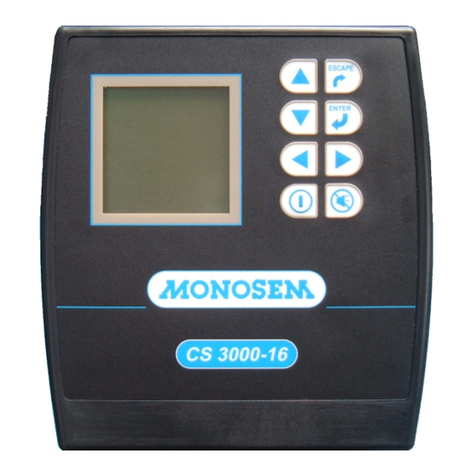
Monosem
Monosem CS 3000-16 manual
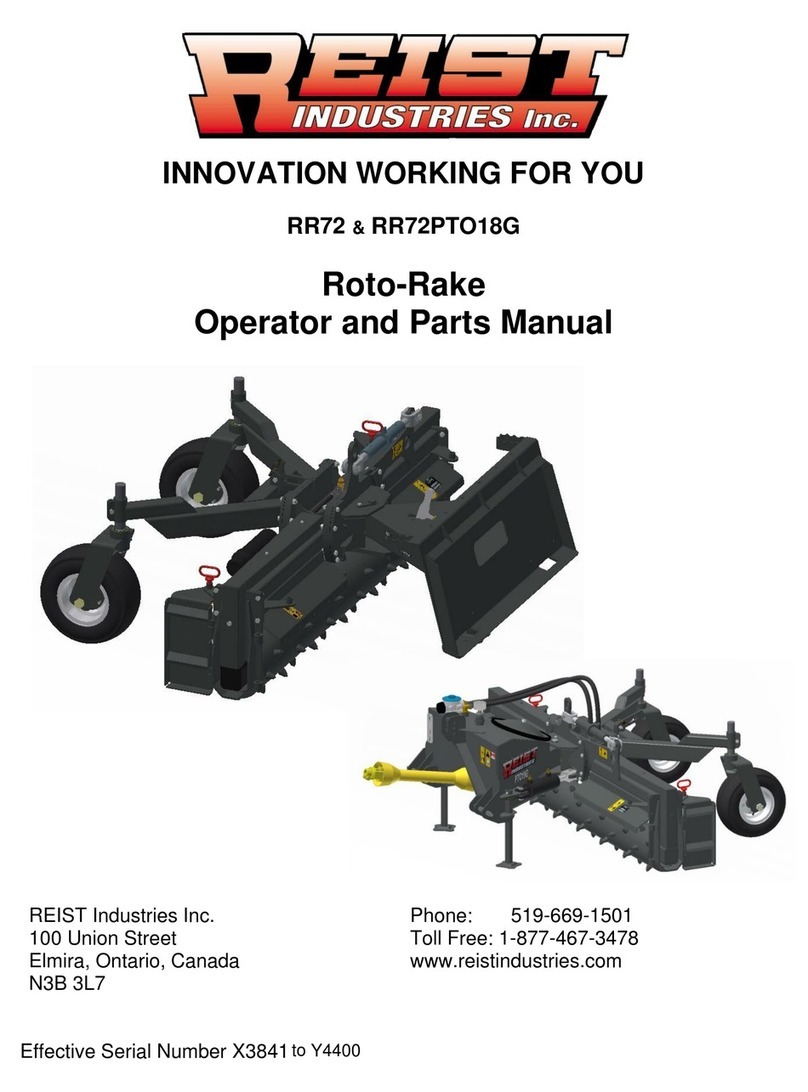
REIST INDUSTRIES
REIST INDUSTRIES RR72 Operator and parts manual
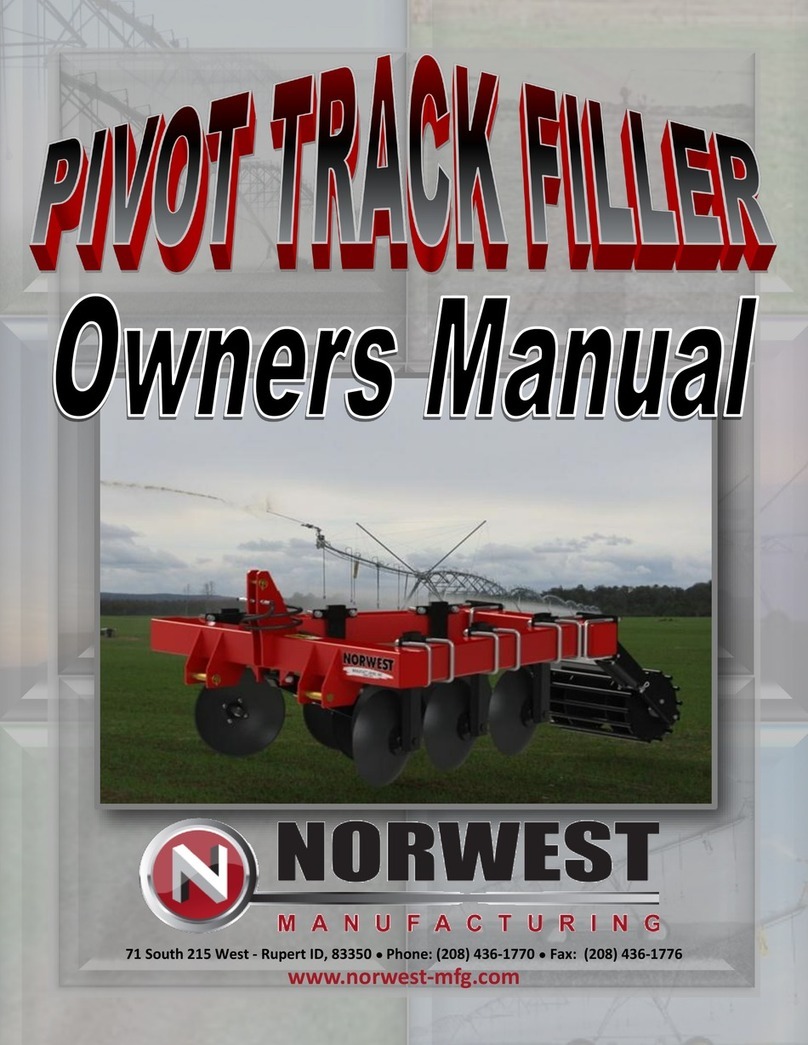
Norwest
Norwest Pivot track filler owner's manual
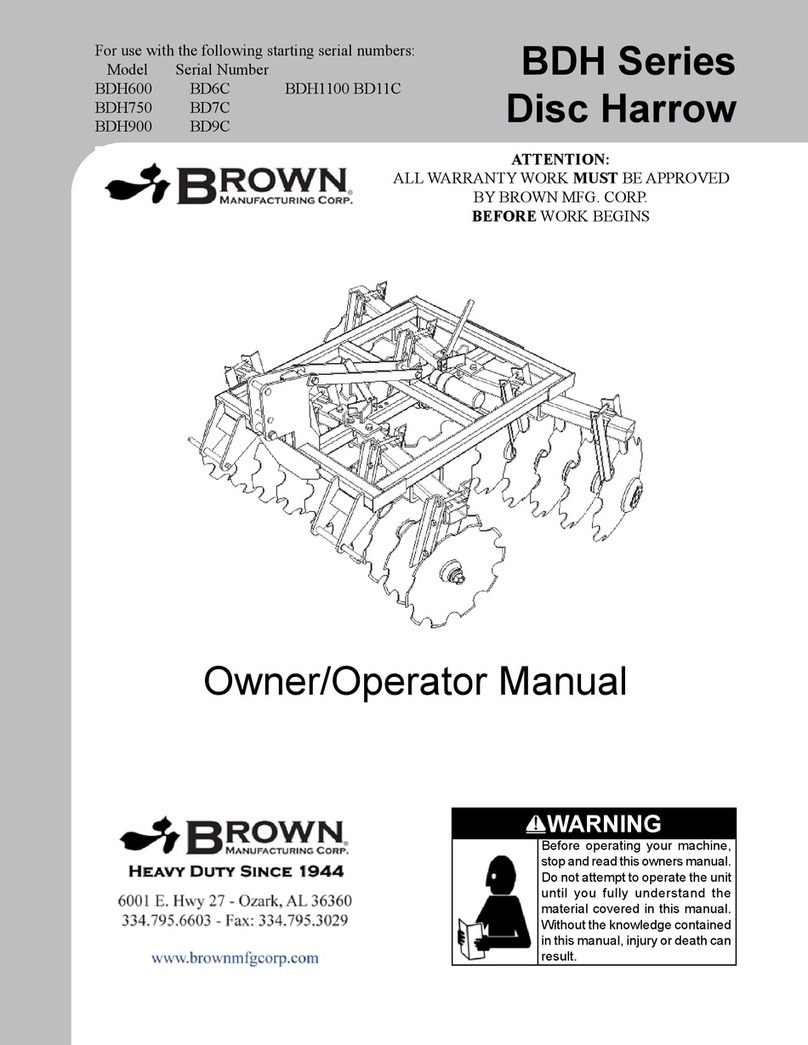
BROWN
BROWN BDH Series Owner's/operator's manual
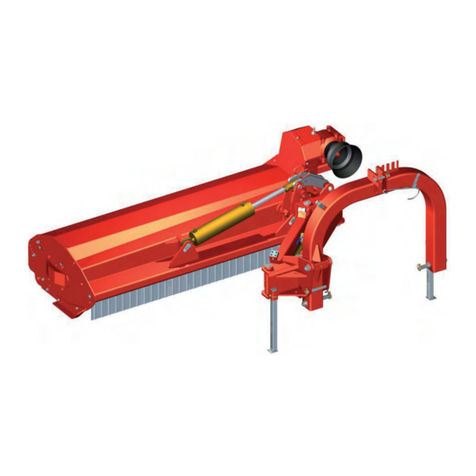
breviglieri
breviglieri Hypermaster XL Operating and maintenance manual
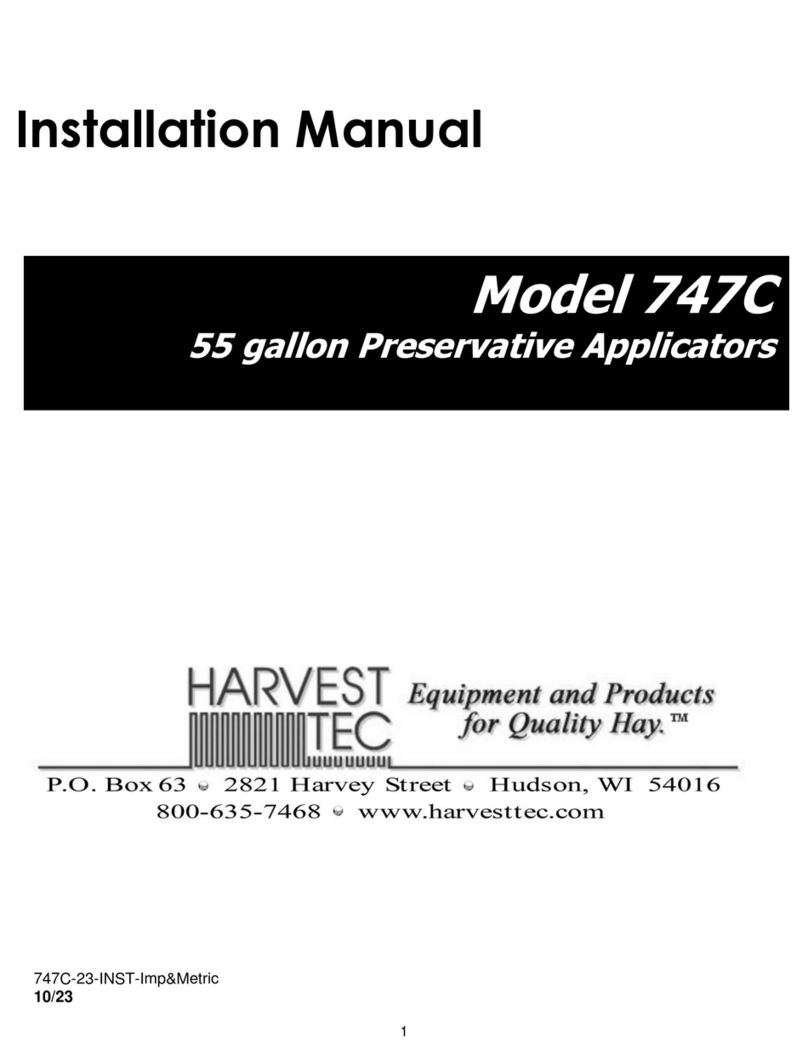
Harvest TEC
Harvest TEC 747C installation manual

